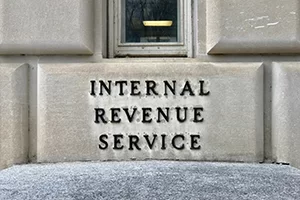
Business Advisory Services
Everything you need to help you launch your new business entity from business entity selection to multiple-entity business structures.
Hey - Our site just had a makeover and we are sorting through the hiccups!
Hey - Our site just had a makeover and we are sorting through the hiccups!

Everything you need to help you launch your new business entity from business entity selection to multiple-entity business structures.

Designed for rental property owners where WCG CPAs & Advisors supports you as your real estate CPA.

Everything you need from tax return preparation for your small business to your rental to your corporation is here.

WCG’s primary objective is to help you to feel comfortable about engaging with us
Posted Tuesday, June 11, 2024
Table Of Contents
 Determining a reasonable shareholder salary and reasonable officer compensation is the murkiest part of running an S corporation. The biggest question we get is, “What the heck do I pay myself?”
Determining a reasonable shareholder salary and reasonable officer compensation is the murkiest part of running an S corporation. The biggest question we get is, “What the heck do I pay myself?”
Before we get into that, let’s discuss why a reasonable S Corp wage needs to be just above bar napkin quality and just below NASA precision. WCG CPAs & Advisors as been computing reasonable compensation for S corporations since 2007, and we believe we have it dialed in as well as anyone can.
We’ve mentioned in our website and book that the main tax benefit of an S Corp is lowering self-employment taxes. When we talk about S corporation compensation, we mean reducing Social Security and Medicare taxes (payroll taxes). When your company, or any company, pays you $10,000 in shareholder wages, 7.65% is withheld from your pay check for the employee’s portion of payroll taxes. This is broken down into 6.2% Social Security and 1.45% Medicare. Your company must also pay 7.65% for a combined percentage of 15.3%.
Therefore, a $10,000 shareholder salary costs you $1,530 in additional taxes beyond income taxes. Said differently, if you pay yourself $90,000 when $80,000 could have been a reasonable shareholder salary, you just wasted $1,530. Even a $5,000 delta equates to $765. As such, your S Corp officer compensation needs to be reasonable, sure, but it also needs to be as low as reasonableness and not-so-common sense allows.
As you go through this webpage, keep two simple things in mind:
First, the word ‘reasonable’ has an antithesis, and can be defined in the negative. In other words, while it is hard to define reasonable, we can confidently define what is unreasonable. Paying $5,000 in shareholder salaries on $100,000 in net business income (profits) for a one-person consultant S Corp is unreasonable. Most people would agree with that sentiment.
Let’s try explaining this differently. Instead of going over the reasonable limit, think of figuring out an S Corp salary as making sure it doesn’t trip the wire of being unreasonable.
To be certain, the IRS and others use the word reasonable, but they too cannot define what is precisely reasonable and what is preciselynotreasonable. While the sparring of reasonable and unreasonable presents a binary situation with a winner and a loser, it is anything but binary.
Second, we highly suggest embracing the fluidity of defining a reasonable shareholder salary. If you’re the type that likes straight lines and clean garages, this will probably bug you a little. However, having the option to pitch an argument with reasonable salary calculations puts you in a favorable position.
Before we go too far with theory, statistics and related whatnot, shareholder payroll processing is an important topic. First, it tends to blow people up initially on how it all works, where does the money go, etc. Second, it is absolutely required and therefore essential to your life as an S Corp shareholder. Here are some resources to help:
Let’s jump right into some numbers first before going through reasonable S Corp salary theory developed from IRS revenue rules and tax court cases. The following table is a summary generated from IRS statistics on S corporation tax returns for the 2013 tax year. Yes, this is the most current (okay, that’s a lie… IRS released 2014 not too long ago but the data hasn’t shfited). No, we do not know why a room full of servers can’t crunch this in real-time. So here we are-
| Gross Receipts | Net Income | Officer Comp | Officer Comp % | |
| Annual Receipts | Per Return | Per Return | Per Return | of Net Income |
| $25,000 to $99,999 | 62,552 | 6,672 | 8,871 | 57% |
| $100,000 to $249,999 | 168,051 | 22,194 | 22,786 | 51% |
| $250,000 to $499,999 | 365,476 | 37,732 | 43,158 | 53% |
| $500,000 to $999,999 | 720,013 | 58,351 | 67,474 | 54% |
| $1M to $2.5M | 1,572,621 | 119,808 | 110,911 | 48% |
First, some quick observations: Officer compensation is added back to net income to determine officer comp as a percentage of net income. Next, this is all industries from capital intensive manufacturing to personal services business such as attorneys, doctors, consultants, engineers, and accountants. Also, this includes S Corps who lost money, and whether they lost money and continued to pay a reasonable shareholder salary (officer compensation) is unclear. In other words, if losses were teased out, would officer compensation be reduced as a percentage of net income? We cannot quickly determine.
Here is the same data grouped by gross receipts but detailed by selected industries. First one is $100,000 to $249,999 in gross receipts-
| Gross Receipts | Net Income | Officer Comp | Officer Comp % | |
| $100,000 to $249,999 | Per Return | Per Return | Per Return | of Net Income |
| Finance and Insurance | 160,359 | 34,408 | 23,213 | 40% |
| Real Estate | 165,375 | 38,231 | 28,193 | 42% |
| Professional, Scientific | 163,151 | 32,910 | 35,404 | 52% |
| Health Care | 174,383 | 24,622 | 36,026 | 59% |
And now for $250,000 to $499,999 in gross receipts-
| Gross Receipts | Net Income | Officer Comp | Officer Comp % | |
| $250,000 to $499,999 | Per Return | Per Return | Per Return | of Net Income |
| Finance and Insurance | 366,533 | 77,518 | 62,329 | 45% |
| Real Estate | 359,163 | 65,419 | 51,151 | 44% |
| Professional, Scientific | 355,693 | 71,136 | 74,493 | 51% |
| Health Care | 378,147 | 51,553 | 75,382 | 59% |
There you go. Remember that officer compensation includes all fringe benefits such as self-employed health insurance and HSA contributions, and it might be influenced (increased) by those who want to maximize 401k deferrals and/or defined benefits pensions. In other words, if your S corporation earned $150,000 before shareholder salaries, and you wanted to maximize your 401k contribution, you might pay $150,000 as reasonable officer compensation which would be 100% of your business income.
Truth be told, there are some philosophical issues with calculating a reasonable S corporation salary when your labor is the only material income-producing factor for the business. Some would argue that all the S Corp’s income should then be considered shareholder wages and subjected to Social Security and Medicare taxes, since if you died the company would die (especially for specified service trades or businesses such as an attorney, accountant, or physician).
Conversely, there might be times when your business would continue without you. When WCG does business valuations, especially in divorce proceedings, we assign a value to personal and enterprise goodwill through a method called excess earnings (the recognized method in Colorado and other states, although the tides are shifting). We do this by taking a number called seller’s discretionary cash flow (SDCF) and we subtract the cash flow that is derived from tangible assets (cash, equipment, etc.). This leaves us with a theoretical number that is considered goodwill, which can be used as a proxy to determine your “value” to the business and can be leveraged into creating an S Corp salary calculator with 1s and 0s. Quantifiable stuff.
We further tease out personal goodwill and enterprise goodwill, since in some jurisdictions personal goodwill is not marital property. This might seem like an odd tangent, but a similar argument can be made for a business that does not rely on you. One great example is a financial advisor that has a small team supporting them. Typically, the fee income continues well into the future without the direct involvement of the advisor (enterprise goodwill). In this situation, an argument for a smaller salary could be warranted, since enterprise goodwill exceeds personal goodwill. Consider this:
| Business Type | Owner Participation |
| Software developer who has gone to market | 10% |
| Amazon retailer, a lot of drop shipments, no inventory | 20% |
| Financial advisor with small team | 30% |
| Doctor who is a partner in an emergency clinic | 40% |
| Consultant, Attorney, Accountant | 90% |
| Actor with no endorsements or couch-jumping events | 100% |
Of course, this is all theoretical and is open to debate, but you get the idea.
For example, you start off as a one-person engineering firm earning $150,000 net ordinary business income (profit) after expenses and deductions but before shareholder salary. You pay yourself $65,000 and pocket $85,000 as shareholder distributions.
Time moves along, and you’ve hired eight other engineers, and they are paid $90,000 each but contribute $60,000 to the bottom line of the business (using the $150,000 number above as a proxy). Even if you increase your salary to $150,000, you still have $480,000 ($60,000 x 8) available for shareholder distributions.
Using our previous question about the actor or on-air personality, would your answer change if this person developed a process such as podcasts, videos, merchandising, likeness licensing, etc.? Of course, it would. An actor who earns $300,000 from acting and $200,000 from other sustainable sources is much different than the surgeon who earned $500,000. As such, reasonable S corporation salaries would certainly vary.
Here’s another one to make you think. How about a financial advisor who has been in the business for 25 years? A lot of their present-day income is truly deferred earnings from multiple decades of hard work. Sounds more like an investment, doesn’t it? And as we’ve discussed, a return on an investment is more of a shareholder distribution argument than a reasonable salary argument.
We could go on and on with this.
Not to go too far into the weeds, but when performing business valuations, we also consider investor value. What rate of return would an investor need to earn after paying you a reasonable salary? Of course, a lower salary to you results in a higher rate of return for the investor. We discuss investment risk and return on investment in a bit. We digress…
This web page is a condensed version of Chapter 9 Reasonable Shareholder Salary from our book, Taxpayer’s Comprehensive Guide to LLCs and S Corps. Here we will review-
Jason Watson, CPA outlines the IRS and Tax Court criteria for determining reasonable shareholder salary including S Corp owners.
 In 1959, IRS Revenue Ruling 59-221 held that amounts of S corporation undistributed taxable income which are required to be included in each shareholder’s gross income do not constitute net earnings from self-employment to shareholders. However, in 1974, IRS Revenue Ruling 74-44 stated that “dividends” paid as reasonable S Corp salary to shareholders will be re-characterized as wages when such “dividends” are paid to shareholders in lieu of reasonable compensation for services performed for the S Corp. Read that again- “in lieu of” is paramount. Also, the word dividends is in quotations because in reality we call these shareholder distributions, but in 1974 they referred to them as dividends (since most S corporations were really C corporations with an S election, LLCs did not exist).
In 1959, IRS Revenue Ruling 59-221 held that amounts of S corporation undistributed taxable income which are required to be included in each shareholder’s gross income do not constitute net earnings from self-employment to shareholders. However, in 1974, IRS Revenue Ruling 74-44 stated that “dividends” paid as reasonable S Corp salary to shareholders will be re-characterized as wages when such “dividends” are paid to shareholders in lieu of reasonable compensation for services performed for the S Corp. Read that again- “in lieu of” is paramount. Also, the word dividends is in quotations because in reality we call these shareholder distributions, but in 1974 they referred to them as dividends (since most S corporations were really C corporations with an S election, LLCs did not exist).
This makes sense; dividends being used to pay for services truly are wages. If Google or Amazon pays out a dividend to its shareholders, it is considered investment income. If your S corporation does the same thing to its only shareholder without an accompanying reasonable shareholder wage, then it is considered self-employment income and subject to the gaggle of taxes with that type of income.
Moving on… There are several factors to consider when coming up with a reasonable shareholder salary. The IRS through Fact Sheet 2008-25 released the following laundry list-
This list actually has two applications. Since C corporations might have a tax rate that might exceed an individual tax rate (especially before Tax Cuts and Jobs Act of 2017), including being double-taxed, many small C corporations want to drive corporate income close to zero by paying high salaries. The IRS and the tax court will use this list to say your salary is too high for a C Corp. Conversely, S corporations want to increase corporate income by paying small salaries. The IRS and the tax court will talk out of the other side of their mouths by using this list to justify a higher salary. Yes, they get to have it both ways… but if you look carefully, the IRS and the tax court only focus on the too high and the too low. Just like Goldie Locks, they like things just right, and often don’t waste time trying to scrutinize a salary for the low chance of a change.
he tax court has provided some guidance over the years in several well-known cases. Here is a quick reference list-
Spicer was the only accountant working for the firm and it was owned 50-50 with his wife. He only received dividends, and claimed to donate his services to the S corporation. The court held “The Federal Insurance Contributions Act and Federal Unemployment Tax Act both define ‘wages’ as ‘all remuneration for employment… that the form of payment is immaterial… [therefore] the only relevant factor being whether payments were actually received as compensation for employment.”
No relation to WCG or the Watsons of WCG! In this case, Watson was an accountant in a firm he owned. He drew a salary of $24,000 even though the firm grossed nearly $3 million in revenue. Watson was a Certified Public Accountant with advanced degrees. The 8th Circuit Court ruled that a reasonable person would consider the dividends paid to Watson to be “remuneration for services performed” as opposed to a return on investment. To support its position, the IRS successfully asserted that the $24,000 shareholder salary was not enough to support Watson’s lifestyle. As such, his dividends were reclassified as wages and the firm was assessed huge employment taxes plus penalties and interest.
Dahl, an accountant and sole shareholder, paid himself a small salary. The IRS hired a valuation expert who used Risk Management Association (RMA) data to determine what other accountants were paid for similar services. The RMA data was damning enough, however what really sent this case over the edge is the Dahl paid himself less than his staff including clerical positions. While admins might be more valuable than you, in the eyes of the IRS, they cannot make more than you.
These darn accountants are out of control! Here are a couple of “wins.”
 A husband and wife team owned a corporation. The husband worked elsewhere and the wife performed clerical duties (12 hours per month). Her accountant said her services were worth $8 per hour. The IRS did not challenge the value of the time commitment and therefore Davis won this case because the wife was able to prove her minimal hours.
A husband and wife team owned a corporation. The husband worked elsewhere and the wife performed clerical duties (12 hours per month). Her accountant said her services were worth $8 per hour. The IRS did not challenge the value of the time commitment and therefore Davis won this case because the wife was able to prove her minimal hours.
In a recent tax court case, the IRS hired a valuation expert to determine that a real estate agent should have been paid $100,755 salary out of his S Corp’s net income of $231,454. Not bad. He still took home over $130,000 in distributions, and avoided self-employment taxes (mainly Medicare) on that portion of his income. Then again, this makes sense. Real estate oftentimes sells itself thanks to the internet, and the real estate agents are merely facilitators. In other words, the actions of the real estate agent were not solely responsible for $231,454 in income.
There are two tests that tax courts have used in the past. In Label Graphics, Inc. v. Commissioner, Tax Court Memo 1998-343 which was later affirmed by the 9th Circuit Court in 2000, the court came up with:
In Brewer Quality Homes, Inc. v. Commissioner, Tax Court Memo 2003-200, the court re-iterated several points from another federal court case; Owensby & Kritikos, Inc. v. Commissioner, 819 F.2d 1315 (5th Cir. 1987):
Similarly to IRS Fact Sheet 2008-25, no single factor controls. It really is a preponderance of the evidence, as civil courts like to say. Tax court judges will go through these lists, depending on the case and the jurisdiction, and will apply the facts and circumstances to each of these factors. They essentially make a list of pluses or minuses to determine a reasonable S corporation salary.
The tax court and the IRS will attempt to support a reasonable shareholder salary based on your peers and colleagues. They will use an expert who specializes in vocational valuations, and this person might use Risk Management Association (RMA) and Bureau of Labor Statistics (BLS) data, including local and regional data, to put together reasonable compensation for an S Corp officer. How does this equate into an S Corp reasonable salary calculator? It doesn’t, but we are getting closer to quantifying it.
Our previous real estate agent benefited from this type of valuation, since his S corporation earned significantly more than the average real estate agent’s salary. But what if the opposite was true. So, instead of earning $231,454 and only paying out $100,755 in salary, what if you earned $110,000? Would you have to pay out $100,755 in salary just because you are a real estate agent in an area where other agents earn $100,755?
The answer is a true accountant or lawyer response: it depends. There are several factors that mitigate this. Perhaps you work part-time. Perhaps you simply are not as good as your peers. Maybe you focus on a different type of customer. Review the previous laundry lists, and as you go through each item, ask yourself if you could safely use that to justify a lower salary than your peers; we bet you can find many instances.
Statistics try to make a group of people seem similar so we can find patterns and draw conclusions. Some professions that seem like sure bets aren’t always what they seem. For example, some attorneys and accountants earn very different amounts. We know some attorneys who make $100,000 a year, while others make $250,000. It is very tough to jam these two square pegs into the same round hole. The same thing can be said of accountants or IT consultants. Even physicians doing the same field of work — anesthesia for instance — range between $80,000 and $400,000. It all looks like the same work, at least on paper, yet there are wildly different incomes! Do you really want the $80,000 a year doctor putting you under? What if he or she only worked one day a week, which would equate to $400,000? Yeah, we’re guessing that probably doesn’t help you feel better.
There is another lesson to be learned here. As your S Corp income increases, the reasonable S corp salary paid to the shareholders does not necessarily increase on a pro rate basis. In other words, if you peg your salary at $60,000 and that is supported with labor data, your salary does not double just because your net income in your S corporation doubles. Your salary is based on you, and the data surrounding you. Yes, the courts look at distributions and net income, and Yes, your salary would probably be increased if your net income doubles, but it is not tethered in a lock-step, $1 for $1 pattern.
If you visit this link and read the report, RCReports does a wonderful job coming up with a number and then putting a bunch of data behind it. The report looks official and uses sources; this is a critical consideration since reasonable compensation is such a squishy thing. In other words, the IRS might challenge your reasonable S Corp salary much like a mall cop with a badge but no gun, and certainly no evidence. When you roll up with a 7-page document that has numbers, data and sources scattered about, it is super hard for the IRS to say No. For lack of better evidence, the IRS would be forced to use your evidence.
RCReports uses three approaches similar to business valuations (which we also do); cost, market, and income. The cost approach, aka the “many hats” approach, uses the theory of you doing several jobs in one. It’s like the asset approach in business valuations, where we reconstruct the business brick by brick. Similarly, for you, each piece of “hat” you wear is put together to form a reasonable compensation salary. The market approach (what similar people are paid) and income approach (what an investor would pay you to run the business) are usually used with larger businesses or with businesses that have good public data. For example, financial advisors have wonderful data from BLS.gov, Salary.com and RCReports. Otherwise, most reports that we see for our client base is the cost “many hats” approach.

Another consideration is that just because RCReports comes up with a salary, does not mean you must pay that salary. There might be circumstances which would drive down a reasonable salary, such as rapid growth, unsteady earnings, etc. Conversely, there might be circumstances, such as 401k and other external reasons, to increase your salary.
Please keep in mind, too, that reasonable compensation includes self-employed health insurance and HSA contributions. Therefore, if RCReports comes up with $80,000, but your health insurance is $10,000, then your salary should be $70,000.
WCG can do a reasonable compensation analysis for you. Yeah, we have to charge you about $450 which includes some consultation and one revision. It might seem a bit spendy, but it gives you a defensible salary and some peace of mind. Bargain!
We also encourage you to visit some of our blog posts and our book, Taxpayer’s Comprehensive Guide to LLCs and S Corps, to assist you with the reasonable salary calculations for your S corporation-
We raise the risk issue throughout our chapter on reasonable shareholder salary, but let’s touch on it some more. Please recall that shareholder distributions are financial rewards to the investor. While the detached abstract investor and the employee are the same person (you), it doesn’t change the theoretical demands of an investor. When a business valuation is calculated, discretionary cash flow is determined and then a risk premium is assigned to it. Simply stated, cash flow divided by risk (capitalization rate) equals value.
Company specific risk includes things like (just naming a few)-
Look at this list again, and compare it to your business. Are you relatively new? Are your earnings volatile (such as real estate)? Even 10% swings could be considered volatile. What would happen if Walmart stated in their shareholder meeting that they were predicting being off 10% next year? Heads would roll.
What about your service concentration? Think of an attorney: they pass the bar exam as a generalist, but quickly become a specialist (and forget all the other law they’ve learned). Can you take your current skill set and find a whole new gaggle of customers in a different industry or sector? Potentially, but there’s not a promise!
What about customer concentration? Are you a 1099 contractor who has one client who also happens to be your former employer? Huge risk, right? Heck, they’ve already fired you once!
What is your ability to affect pricing? Usually none. Perhaps Apple is able to do this, but probably not you, the mighty solo operator holed up in your home office.
What does all this mean? This means that any small business owner assumes a ton of risk, and that risk should demand a higher return on investment. In other words, a higher return on investment should demand higher shareholder (investor) distributions, and therefore lower shareholder salaries. It’s a lot like a teeter-totter.
The entire economic benefit of the business can only be paid out in salaries and distributions (and perhaps perquisites, which we all call “perks”). As such, if distributions are higher because of investor risk and the subsequent demand for more return on investment to meet the risk profile, then salaries must be reduced.
 So you are bumping along and one day your employer decides to convert you from a W-2 employee to a 1099 contractor. Aside from this being a load-shedding sham that the IRS and most states believe to be an end-around, several large companies continue to reduce their workforce in favor of contractors.
So you are bumping along and one day your employer decides to convert you from a W-2 employee to a 1099 contractor. Aside from this being a load-shedding sham that the IRS and most states believe to be an end-around, several large companies continue to reduce their workforce in favor of contractors.
You say, no problem, and eventually create an LLC taxed as an S corporation. Now what? Do you peg your salary to the same salary you had before? Hardly. Labor burden rates for companies can vary from 1.4 to 2.0. What does this mean? This means if a company is paying you a $100,000 salary, your actual cost to the company might be as high as $200,000. Why?
Health insurance, dental insurance, paid time off, vacation, sick pay, holiday pay, payroll taxes, workers’ compensation insurance, disability, group life insurance, office rent (smaller workforce smaller office footprint), etc. Yeah… read that again. There is a ton of overhead that gets tacked on to you as an employee. There’s no wondering why the company just converted you from W-2 to 1099. More money for them, not for you!
How does this factor in the reasonable salary conversation? Let’s say your company’s labor burden rate is 1.8 which is not far off most big, fat corporations. This would suggest that a $100,000 salary costs the company $180,000. If you are paid $100,000 as a contractor (which would be a crummy deal), then your relative salary could be $55,000. You shouldn’t get penalized if you run a leaner operation than your former employer.
What about the risk of this new arrangement? As a shareholder in an S corporation you are assuming a ton of risk: equity risk, industry risk, small business risk and company-specific risk. If we perform a business valuation where the business has a singular client, the risk of the future economic benefit (income stream) is huge.
As risk increases, we demand a higher rate of return, or increased distributions. Makes sense, right?
Labor burden rate plus increased risk of singular client can suggest a lower salary than the old W-2 job. And, being converted is not a bad deal! A company car, your own 401k, business casual (PJ’s) etc.
There are plenty of professions that have great data from the Bureau of Labor Statistics (BLS), Risk Management Association (RMA) or RCReports. But let’s say your job is some odd-duck, whacky thing for which comparable data doesn’t exist. Where do we start quantitatively? At the end of the day, we need a number!
One argument that we and others have made is the concept of 1/3, 1/3, 1/3-
Where the heck did we get this? A rule of thumb for service trades or businesses such as accountants, attorneys, consultants and the usual suspects is to bill three times the salary. For example, if WCG pays a CPA $80,000 per year, we hope to bill $240,000. 1/3 of this goes to salary, 1/3 goes to expenses, and 1/3 goes to Jason’s new boat in a land-locked state. Most professional firms should have net profits of about 30 to 35% (which is why CPA firms sell for about 1.1 times gross revenue… this suggests a 3-year payback period at 100% retention or about 5–6 years with the usual 60% retention… acceptable ROI).
Even if your profession is easily teased out from labor data, this 1/3 concept can still be used. The middle 1/3 above is allocated to expenses, why should you be penalized for running a leaner, meaner firm than the bloated clowns down the street?
Using the 1/3 concept is just a starting point. Since we must start somewhere, using a mathematical formula makes it easy. From there, and similar to the “plus” and “minus” approach by the IRS and Tax Court judges, we massage this salary to be reasonable for you and your business’s situation.
What does WCG CPAs & Advisors do? We take a shot of average bourbon (why waste the good stuff on salary calculations?) and then:
From there, we:
We expand on this in Chapter 10. Yay! Chapter 10? See below, and also check out the Sample Payroll Plan. Of course, a spreadsheet is only meaningful to the spreadsheet designer, so please check out the instructions too.
Keeping your salary low is what drives the savings in an S corporation. You’ll recall that $10,000 in salary costs you about $1,530 in payroll taxes. However, through the IRS Fact Sheet and several tax court cases, the assignment of reasonable shareholder salary becomes qualitative in relation to several factors such as your role and qualifications, and the relationship to net income and distributions (just to name a few).
Labor data, such as Risk Management Association (RMA) and Bureau of Labor Statistics (BLS) including RCReports, can be hit or miss. Homogenized populations cannot definitely tell the IRS or the tax court what you should be paid. It could be a tool in your toolbox, or it could be one of the many nails in your coffin.
Also, remember self-employed health insurance and Health Savings Accounts (HSA) add to your Box 1 wages on your W-2. Let’s say your reasonable salary is $60,000, and you pay $12,000 in health insurance premiums. You would pay yourself a $48,000 salary but your W-2 Box 1 and Line 7 (Officer Compensation) on your S corporation tax return would show $60,000. However, only $48,000 is subjected to Social Security and Medicare taxes.
One of the best ways to win an argument is to never have the conversation in the first place. The IRS is focused on S corporations who don’t pay any salary at all, or who pay a ridiculously low salary. For them, it is an easy analysis. Line 7 versus Line 21 of the S Corp tax return (Form 1120S). They can also look at the K-1, Box 1 (ordinary income) and compare this to Box 16, Code D (distributions).
IRS scrutiny will only increase over time, but they also want winnable cases. The low-hanging fruit is the S Corp without any reasonable shareholder salary. Why go after someone who is paying themselves $50,000 in salary just to settle on $60,000 after negotiation? An extra $1,530 in the IRS pocket for arguably a tough audit might not be worth it to them. This is contrasted to the person who pays themselves $10,000 and it should be $60,000. There’s some cash in that IRS challenge! Pot odds, baby.
There is a calculated risk when determining reasonable S Corp wage. You can eliminate the risk by paying yourself 100% of the net business income, but then again, that completely defeats the purpose of an S Corp. You can pay yourself 0% and wait for the audit. Or, ideally, you can operate in the soft middle. In the land of obscurity. Below the radar. Whatever floats your boat! Ok, we’ll stop.
We have all this and so much more such as Section 199A deductions, entity structures, small business tax deductions, etc. in our book:
 WCG CPAs & Advisors specializes in small businesses who generally have fewer than 25 employees. Why? We want to help people, and more importantly we want to help the business owner directly. Frankly speaking, once a business gets to a certain size management layers get in the way of owner access. Access allows us to ensure the owner(s) are leveraging the most out of their business for themselves and their families.
WCG CPAs & Advisors specializes in small businesses who generally have fewer than 25 employees. Why? We want to help people, and more importantly we want to help the business owner directly. Frankly speaking, once a business gets to a certain size management layers get in the way of owner access. Access allows us to ensure the owner(s) are leveraging the most out of their business for themselves and their families.
Because small business is a core competency for us, we have created Business Advisory Service platforms which include these really cool things-
| Vail | Telluride | Aspen | |
Compliance & Preparation |
|||
| Business Entity Tax Return (Form 1065, 1120, 1120S) [more] | |||
| Individual Tax Return (Form 1040, joint filing) [more] | |||
| Tax Return Review Meeting | |||
| Tax Resolution, Audit Defense [more] | Advanced | Advanced | Advanced |
| State Income Apportionment, Nexus [more] | Add-On | Add-On | Add-On |
| Expat / Foreign Income Filings (FBAR, 8938) [more] | Add-On | Add-On | Add-On |
Strategic Tax Planning |
|||
| Tax Advisory, Tax Reduction, Business Reviews [more] | 2 Sessions | 2 Sessions | Custom |
| Pre-Planning Meeting (May/Jun) | |||
| Household Tax Projections [more] | |||
| Business Tax Projections (Franchise, PTET Optimization) [more] | Add-On | ||
| Payroll Planning, Optimization [more] | |||
| Reasonable Shareholder Salary Calculation (RCReports) | |||
| Tax Projections Review Meeting (Jul/Aug) | |||
| Section 199A Deduction Optimization [more] | |||
| Small Business Tax Deductions Optimization [more] | |||
| Estimated Income Tax Calcs (via Payroll) [more] | |||
| End of Year Wrap-Up Meeting (Oct/Nov) [more] | |||
| Situational Tax Law Research (up to 3 hours) | |||
Payroll & Accounting |
|||
| Monthly Shareholder Payroll Processing (ADP) [more] | Add-On | Add-On | |
| Quarterly QuickBooks Consulting (QuickStart) [more] | Add-On | Add-On | |
| Accounting Services (Bookkeeping + Analysis) [more] | Add-On | Add-On | Add-On |
| Financial Statement Review [Reach Reporting] | Inc with AST | Inc with AST | Inc with AST |
Business Advisory & Support |
|||
| Periodic Quick Chats (May-Nov) [more] | 3 Chats | 3 Chats | Routine |
| Interfacing with Lenders, Attorneys, Planners | Add-On | Routine | Routine |
| CPA Concierge Services [more] | Add-On | Add-On | |
| Financial Analysis (Cash Flow, Budgeting, KPIs) | |||
| Annual Corporate Governance (Resolutions) | Add-On | Add-On | |
| Annual Fee* | $4,500 | $4,980 | Custom |
| Paid Monthly | $375 | $415 | Custom |
| (prorated based on onboarding date) | |||
The primary difference between Vail and Telluride is business entity tax projections which focuses on state-level taxes such as franchise taxes and pass-through entity tax calculations. See below for more details.
Custom! Unlike the modern day new car packages where you have to spend $8,000 for the moonroof, our Business Advisory Service plans can be customized specifically for you. The array above is simply a starting point. If you need more or less from us, let’s chat about it!
Fees Updated! Our Business Advisory, Investor Patrol and Tax Patrol Service fees were updated August 2024, and we usually hold fees for at least two years (or through December 31, 2026) unless inflation skyrockets back to 9%.
Yeah, we all dislike the little asterisk. The gotcha! The fine print! Well, here is one of those situations. Tax projections under our Vail platform does not include business-entity tax projections and payments (California’s Franchise Tax, New Jersey’s BAIT, Portland’s overall madness, NYC, etc.), pass-through entity tax (PTET) calculations and payments, among other things. Not every business entity needs separate tax projections or planning! Texas, No. California, Yes.
Please see our Tax Planning Services page and Master Service Agreement for more information.Our Telluride Business Advisory plan includes entity specific tax projections as we just described plus interfacing with lenders, attorneys and financial planners (yawn). Here is a quickie listing of our tax planning service levels-
Afraid of bait and switch? Yeah, we think that stinks too. Our annual fee for Vail, as an example, is $4,500. What can make this fee go up? The most prominent reason is additional state tax returns (taxing jurisdictions). However, we will detail that in your proposal. Please see our individual and business entity tax return preparation pages for more information.
Quarterly financial statements analysis is an add-on service, however it is included automatically if you use our accounting services.
 We also have Tax Patrol! This is another wonderful tax service for those who don’t need business advisory services or real estate investment support, but from time to time want some love from an experienced tax consultant and business advisor. Have a quick tax question? Need to know the depreciation rules as you buy that new car? Wondering what your April tax bill is going to be in August? Your spouse upgraded to a different job- how is that going to affect things? You received a big bonus- yay, but how will that impact your tax bill?
We also have Tax Patrol! This is another wonderful tax service for those who don’t need business advisory services or real estate investment support, but from time to time want some love from an experienced tax consultant and business advisor. Have a quick tax question? Need to know the depreciation rules as you buy that new car? Wondering what your April tax bill is going to be in August? Your spouse upgraded to a different job- how is that going to affect things? You received a big bonus- yay, but how will that impact your tax bill?
| Keystone | Copper | Breck | |
| Individual Tax Return Prep (Form 1040, joint filing) [more] | |||
| Business Entity Tax Return Prep (Form 1065, 1120, 1120S) [more] | |||
| Household Tax Projection [more] | |||
| Business Tax Projections, PTET Calcs, SALT Workaround [more] | |||
| Estimated Tax Payments Calcs | |||
| Tax Resolution, Audit Defense [more] | Advanced | Advanced | Advanced |
| Complimentary Quick Chats (CQC) [more] | Routine | Routine | Routine |
| Annual Fee* | $1,740 | $2,400 | $3,360 |
| Paid Monthly | $145 | $200 | $280 |
| (prorated based on onboarding date) | |||
Our Copper and Breck Tax Patrol Services platforms do not include reasonable owner salary recommendations and optimization, including 401k, fringe benefit and health insurance matters as they relate to payroll processing. Should you require these services, our Business Advisory platforms (Vail, Telluride, Aspen) above, like way above, might be a better fit.
On one hand we have our Business Advisory Service plans which are very comprehensive yet might contain some services that not everyone needs such as salary optimization, payroll processing, multiple tax planning events, among other things.
On the other hand we have transactional relationships where clients come in each spring for tax return preparation, and that’s all they need. No questions. No tax planning. Just a pile of tax documents and a few discussions later and bada bing bada boom they have a tax return and a nice summer.
 Is there an in-between? Boom! We have Investor Tax Patrol which is a fancy add-on to our Keystone Tax Patrol platform above.
Is there an in-between? Boom! We have Investor Tax Patrol which is a fancy add-on to our Keystone Tax Patrol platform above.
Investor Tax Patrol is a wonderful tax service for those who don’t need all the advisory bells and whistles, but desire tax planning and, at times, scenario-based decision making assistance from an experienced real estate CPA and tax consultant. Have a quick tax question? Need to know the depreciation rules as you furnish that new short-term rental? Want to kick around Real Estate Professional designation? Wondering what your April tax bill is going to be in August?
Consider these typical fees for a tax-only engagement for rental property tax return preparation. We'll get into an example in a bit-
Here are typical rental property tax prep fees that might be added to your individual tax return (Schedule E reported on Form 1040) or partnership tax return (Form 8825 reported on Form 1065).
Please keep in mind that each rental property is a small business with varying complexity. Operating expenses, improvements, home office deduction including travel, automobile expenses, paying your children, allocated expenses among several rentals among other nuances are business-like considerations and add to the comprehensiveness that WCG provides with rental tax return preparation (learn about our Rental Expert Pod as well).
| Rental Tax Prep, Prepared Financials (Rental Bookkeeping) | $100 ea |
| Rental Tax Prep, Clean DIY Records (The SRO Template) | $150 ea |
| Rental Tax Prep, Complex or Messy Records (disguised disorganization) | $200 ea |
| Add On: Existing Rental converting to STR | $75 |
| Add On: Streamlined State Tax Return (in addition to your resident state) | $125 to $200 |
| Add On: Complex State Tax Return (see below for what makes complex, complex) | $250 to $400 |
| Add On: Cost Seg Setup + 3115 / 481(a) Calc, Existing Rental Prior to 2025 | $625 |
| Add On: Short-Term Rental Activities (non-investor patrol) | $75 |
| Add On: Rental Property Sale | $250 |
| Add On: 1031 Like-Kind Exchange and New Setup | $450 |
| Add On: Complex 1031 (2:1, 1:2) and New Setup(s) | $750 |
As promised, let's get into an example. Let's say you have 2 rentals, with one being a short-term rental in another state.
| Keystone Tax Patrol (as our base) | $1,740 |
| First Rental Included | $0 |
| Second Rental, Short-Term | $175 |
| Streamlined Additional State Tax Return | $125 |
| Annual Fee | $2,040 |
| Monthly | $170 |
Custom! In the past we tried to have a "3 platform" approach to our rental property owners and real estate investors like we do for business advisory and tax patrol above. There is just way too much customization with rentals- one size fits all is great, but rentals are like snowflakes.
 Investor Patrol is specifically designed to give you the freedom to call, text or email us without the worry of being nickeled and dimed like other outdated CPA firms. And! We also provide a tax planning event (usually around May, June and July) where we gather up your financial records like paystubs, rental activities, stock sales, etc. and we create a mock tax return projecting your annual income and eventual tax obligations. We are not big on surprises… bad news in August is palatable, yet bad news on April 15 is unacceptable. Let’s not forget that Investor Patrol also includes IRS audit defense for any tax return that we prepare. Please review our full Investor Patrol Services webpage for all kinds of fine print for your consideration. It’s really not that much.
Investor Patrol is specifically designed to give you the freedom to call, text or email us without the worry of being nickeled and dimed like other outdated CPA firms. And! We also provide a tax planning event (usually around May, June and July) where we gather up your financial records like paystubs, rental activities, stock sales, etc. and we create a mock tax return projecting your annual income and eventual tax obligations. We are not big on surprises… bad news in August is palatable, yet bad news on April 15 is unacceptable. Let’s not forget that Investor Patrol also includes IRS audit defense for any tax return that we prepare. Please review our full Investor Patrol Services webpage for all kinds of fine print for your consideration. It’s really not that much.
Also, please check out our rental property book titled I Just Got A Rental, What Do I Do? This is our second book. Our first book, Taxpayer’s Comprehensive Guide to LLCs and S Corps, was first published in 2014 and was well-received by small business owners and tax professionals, so we thought a book on rental properties and real estate investments would be equally helpful. So, here we are with our second iteration, or the 2025 edition. We plan to update annually.

We publish our typical fees, but then again they are scattered across several pages and sections of our website. Click below for a consolidated no thrills fee table that combines all our various fees for tax return preparation, tax resolution, accounting services, payroll processing and business services into a simple one pager (you might have to scroll a bit).
Here are some quickie FAQs to learn more about WCG CPAs & Advisors, and how we do business-
Nope. We have a t-shirt that reads, “Hate extensions. Love our summers.” We file 70% of our tax returns by April 15, and only extend per the client’s request or if there is missing data such as a rogue K-1. We’ll go as quickly as you let us! Also, we don’t have A listers… we prepare tax returns in first-in first-out sequence. Sure, we leave room for emergencies or other issues that allow for jumping the line.
Good question! Our Business Advisory Service plans (Vail, Telluride and Aspen) are more advisory forward like a robust old-fashioned with lots of planning, tax strategies and business consultation to help you make decisions. Our Tax Patrol Services (Keystone, Copper and Breck) are more tax return preparation forward like a refreshing vodka-lemonade with less tax planning, or at least less-intensive planning and consultation.
Investor Patrol Services for our rental property owners and investors is somewhere in-between since real estate is a business like any other requiring more tax planning, strategy and consultation but falls short of needing shareholder payroll planning and processing.
 How Often Do We Schedule Meetings?
How Often Do We Schedule Meetings?Up to you! In the past, we would pro-actively schedule quarterly meetings with all Business Advisory, Investor Patrol and Tax Patrol clients, but it was cumbersome for everyone. Today, we generally connect at least 3 times a year in a meaningful way. Once for tax return preparation, once for tax planning and then another for a myriad of reasons (“hey, I am buying a car” or “hey, we sold a rental”). This is all back-filled with emailed correspondence and touch-ups throughout the year. Having said that, with routine consultation offered above, your goal is to extract everything you need from us.
We prefer scheduled meetings over Teams. Check out our CPA Concierge Service as well. Priority boarding. HOV lane. Early check-in.
We rely heavily on emails and text message alerts. However, we do not have an allergy to the telephone. During friendly hours (let’s say 8AM to 7PM including weekends) we will usually call first if we have a question or need clarification.
Having said that, email can be an effective communication tool, and it is especially good for questions that require thought and good for memorializing conversations. While email is a chore for most people it can also be a distraction. Your WCG team is no different.
As such, we have two big rules that you need to be aware of-
When we have our amazingly productive and efficient conversation via Teams or phone call, we will always send a recap email to memorialize all the goodies. This recap email also gets captured by our workflow software allowing all other team members to view the recap as necessary.
For tax, we have two-person teams so there is always a backup. Teams are assigned based on who first spoke with you, bandwidth and subject matter expertise. We also have accounting, payroll and business formation / governance. As such, you might have 4 people you work with. Yay! The two tax peeps, and if applicable, a payroll peep and an accounting peep (if you are using our Accounting Services team for bookkeeping + analysis). We also have dedicated Client Support and Tax Support teams to… well… support you and the other teams.
Are you interested in business advisory services? Just tax return preparation? Do you own a rental property and need assistance? Let's chat!

Let's schedule a 20-minute discovery meeting with one of our Partners or Senior Tax Professionals to understand your tax footprint and objectives, and how WCG CPAs & Advisors might help.

Taxes can be tricky. Chat with a WCG human now and get questions answered.
The following are additional business services to get your venture launched and on the way. Some of these are teased out separately as one and done fees like formation and onboarding stuff.
Accounting, Payroll |
|
| Monthly Accounting (bookkeeping + analysis) [more] | starting at $525 per month |
| Bi-Monthly Accounting (bookkeeping + analysis every 2 months) | starting at $280 per month |
| Quad-Monthly Accounting (bookkeeping + analysis every 4 months) | starting at $190 per month |
| Annual Compliance Bookkeeping For Tax Return Prep [more] | typically $1,200 annually |
| Annual Accounting | starting at $1,800 annually |
| Rental Property Bookkeeping [more] | starting at $1,200 annually |
| Sales Tax | typically $75 per month |
| typically $150 per quarter | |
| Personal Property Tax | typically $40 per month |
| or starting at $500 annually | |
| Employee Payroll (direct deposit, bi-weekly) [more] | 1 employee, $100 per month |
| 2-5 employees, $175 per month | |
| 6-10 employees, $250 per month |
Fine Print: Starting accounting service fees are based on 2 bank accounts (one checking account and one credit card is 2 accounts) with less than 250 monthly transactions. Our fee does not include the QBO subscription fee from Intuit. Custom quote is available if you have a lot going on such as third-party integrations (POS, time billing system), accrual accounting method, extensive benefits packages and / or industry specific issues (e.g, job costing in construction). The first step for Accounting Services is to do an accounting assessment with one of our experts to determine scope, service level and ultimate fee (see button below).
Even Finer Print: Employee payroll can be added only if already using our Business Advisory Service plans above (e.g, Vail). Custom quote for more than 15 employees and a referral to therapy or a script for Excedrin.
Business Formation |
|
| Articles of Organization or Incorporation, or Dissolution | $625 + state filing fee |
| Initial Report (if required) | $125 + state filing fee |
| Annual Report | $350 + state filing fee |
| Employer Identification Number (EIN) | Included |
| Single Member Operating Agreement (SMLLC) | Included |
| MS Word Templated Bylaws Agreement (Corporations) | Included |
| S Corp Election, Timely Election (made with formation) | Included |
| Accountable Plan | Included |
Onboarding Fees (one and done) |
|
| Payroll Accounts Setup, Transfer, Closing | $550 to $650 depending on state |
| Employee Data Transfer | $25 per EE, > 5 |
| Accounting Setup or Transfer (Fractional Controller) [more] | Varies |
| QuickStart, QuickBooks Setup and Support (90 days) [more] | $750 |
| S Corp Election, Timely Election (within 75 days) | $450 |
| Late S Corp Election Back to January 2024 [more] | $600, $1,200 after Jan 1 2024* |
| Examine Prior Tax Return | Included |
For late S Corp elections back to January, we have a split fee of $600 or $1,200… and it depends on if we can file your S Corp by March 15. Ideally, we attach the late S Corp election to the tax return and file both electronically. Yay! Conversely, if we cannot file on March 15, we also cannot electronically extend the tax return. As such, when we file in June or July, it is now considered late. We can usually have the penalties abated, but it takes effort hence the additional $600 fee (the $600 v. $1,200). Be a hero, and get us your stuff right away to save a few bucks and trim down the anxiety.
Business Maintenance |
|
| Entity Relocation Package (payroll closure and opening, entity move) [more] | $800 (some are $1,050) + state filing fees |
| Address Changes w/o Payroll (IRS, State Dept of Revenue, Secretary of State) | $250 + state filing fees |
| Address Changes with Payroll (above + state and local payroll agencies) | $350 to $450 + state filing fees |
Our entity relocation package includes closing your current payroll accounts, opening shiny new ones, moving your entity with the Secretary of State (if applicable) and updating addresses as necessary.
Speaking of address changes… these are tough. Basic address changes require IRS, State Department of Revenue and Secretary of State notifications. Address changes that include payroll add another level of complexity since departments of revenue are not the same as departments of labor, and there might be local or municipal agencies as well.
A la Carte fee ranges are approximates. 80% of our clients fit into our published fees, but there are outliers. We have a handful of clients with over 30 rentals; their individual tax return is north of $4,000. We also are assuming one state; if your business spans the galaxy then additional fees will be discussed with you prior to payroll setup or tax return preparation. Typically, each state or tax jurisdiction is around $250 to $350 for tax preparation since it affects both your business and individual tax returns (frankly, state apportionment is a pain in the butt, but it is our pain… and states, especially California and New York, are crazy about it).
Some more things to consider- when a partial year remains, our usual annual fee is decremented to not charge you for services you didn’t use such as payroll processing. However, a large chunk of our annual fee is tax return preparation which is typically a built-in fixed amount of $2,300 (both business entity and individual tax returns) plus annual tax planning. Whether we onboard you in January, July or December, we have to prepare a full year tax return. This increases the monthly fee for the remaining months of 2024 but the monthly fee will later decrease in January of 2025 to reflect the amounts above. Yeah, we make it sound like 2025 is just around the corner.
We make very little profits on payroll processing… we offer it as a convenience to our clients. One throat to choke with a single call can be reassuring but if you want to run your payroll, go for it! Everyone thinks payroll is a piece of cake; write a check and done. Nope… we see a lot of mistakes being made by small business owners especially the handling of self-employed health insurance and HSA contributions since there are special rules for greater than 2% S Corp shareholders. Then again, we don’t mind fixing what was broken.
You can prepare your own individual tax return as well… but the benefit WCG preparing both individual and business tax returns is that can we slide things around depending on income limitations, phaseouts, alternative minimum tax (AMT), Section 199A deduction optimization, pass-through entity tax deductions (PTET), etc. Having our arms around both worlds can yield some good tax savings!
Note: An individual tax return is what the IRS calls Form 1040 and refers to the entity filing the tax return (you, the individual, are the entity). However, a married couple are deemed to be one entity for the sake of an individual tax return. So, when we say we will prepare your individual tax return, it is meant to include your spouse in a jointly filed happy happy joy joy tax return.
Break-even analysis is based on our annual fee of $4,500 for our Vail package. If an S corporation saves you 8% to 10% (on average) in taxes over the garden-variety LLC, then $4,500 divided by 9% equals $50,000 of net ordinary business income (profit) after expenses and deductions.
This doesn’t factor in the lower audit rate of S Corps versus Schedule C activities, plus the ability to use business funds to pay for your state income taxes otherwise known as the Pass-Thru Entity Tax Deduction (PTET) or the great SALT workaround.
More sales pitch! Keep in mind that our fee of $4,500 includes your individual tax return which you might already be paying another tax professional to prepare. WCG CPAs & Advisors has a handful of clients who are right at the break-even point of $50,000 but leverage an S Corp and our services to get tax return preparation, tax planning and consultation.
We are not salespeople. We are not putting lipstick on a pig, and trying to convince you to love it, even if Tom Ford’s Wild Ginger looks amazing. Our job remains being professionally detached, giving you information and letting you decide.
 Moreover, many CPAs and tax professionals thrust their risk aversion onto their clients. This is bad. At WCG CPAs & Advisors we must perform our due diligence and hurdle our ethical and professional standards. However, after those gymnastics we present a risk-based analysis to the tax return and let you, the client and taxpayer, decide how to proceed. Having said that, we don’t entertain tax scammers or those who can take down the ship. Arthur Anderson anyone? No thanks.
Moreover, many CPAs and tax professionals thrust their risk aversion onto their clients. This is bad. At WCG CPAs & Advisors we must perform our due diligence and hurdle our ethical and professional standards. However, after those gymnastics we present a risk-based analysis to the tax return and let you, the client and taxpayer, decide how to proceed. Having said that, we don’t entertain tax scammers or those who can take down the ship. Arthur Anderson anyone? No thanks.
We also see far too many crazy schemes and half-baked ideas from attorneys and wealth managers. In some cases, they are good ideas. In most cases, all the entities, layering and mixed ownership is only the illusion of precision. Just because you can complicate the crap out of your life doesn’t mean you must. Just like Chris Rock says, just because you can drive your car with your feet doesn’t make it a good idea.
Here is a brief summary of the next steps should you want to engage WCG with Business Advisory Services or Tax Patrol-
 As mentioned elsewhere we primarily focus on small business owners and their unique consultation and tax preparation needs. With over 60 full-time consultation professionals including Certified Public Accountants, Enrolled Agents and Certified Financial Planners on your team, WCG CPAs & Advisors consults on custom business structures, multiple entity arrangements, S corp elections (even late S corp elections back to January), tax strategies, business coaching, industry analysis, executive benefits, retirement planning including individual 401k plans, exit strategies, business valuations, income tax planning and modeling, and tax representation.
As mentioned elsewhere we primarily focus on small business owners and their unique consultation and tax preparation needs. With over 60 full-time consultation professionals including Certified Public Accountants, Enrolled Agents and Certified Financial Planners on your team, WCG CPAs & Advisors consults on custom business structures, multiple entity arrangements, S corp elections (even late S corp elections back to January), tax strategies, business coaching, industry analysis, executive benefits, retirement planning including individual 401k plans, exit strategies, business valuations, income tax planning and modeling, and tax representation.
We also work with business law attorneys for business owners who have additional needs such as drafting Operating Agreements, fee for service contracts, buying or selling a business including employee stock ownership plans and partner buy-ins. In addition, WCG coordinates with third party plan administrators create age-based profit sharing plans and cash balance (defined benefit) plans. We can run point on whatever your business needs to ensure that communication is effective and efficient allowing you to sell widgets.
Here are some additional resources you might find useful.
WCG CPAs & Advisors is a full-service yet boutique progressive tax, accounting and business consultation firm located in Colorado serving clients worldwide.
Jason Watson, CPA, CVA is trained by the American Institute of CPAs and the National Association of Certified Valuation Analysts (CVA) for Business Valuation. Jason has represented several buyers and sellers in business acquisitions, and has helped divorcing couples value a small business for divorce property settlements. When performing business consultation and business valuation services under engagement, his hourly fee is $350 with a retainer of $5,000 to $8,000 depending on the complexity of the case. Depositions and trial testimony are $450 per hour (possibly with an additional retainer).
We also have a short list of additional fees that might be incurred depending on your tax and accounting situation, and your level of readiness-
Various Things |
|
| Copying and returning of original tax documents | $45 |
| Significant changes or additions after a preliminary tax return is prepared- “crud, let me re-work all my numbers.” | $250 / hr |
| Tax resolution and/or audit assistance; Resolution is typically 2 hours; audit assistance is typically two 2-hour sessions | $375 / hr |
| Lender or “comfort” letters | $250 to $600 |
| Business Valuations | $5,000 – $8,000 retainer, $350 / hr |
| Divorce Analysis, Litigation Support | $250 / hr, $350 / hr for court |
| Client Support, Administrative billable rate | $150 / hr |
| Accountant billable rate | $150 / hr |
| Supervisor billable rate | $250 / hr |
| Manager billable rate | $300 / hr |
| Partner billable rate | $400 / hr |
| Managing Partner billable rate | $450 / hr |
| Senior Partner billable rate | $475 to $525 / hr |
Wow! We really belabored the heck out of those hourly rates there at the end, didn’t we? All in the interest of tax preparation fee transparency of a growing firm.
Also! Please keep in mind that we pride ourselves in not being the nickel and dime type of tax and accounting firm. Typically, we can offer a fee range or a maximum limit for our services and fees to keep your tax prep cost where you want it. This is what we do all day, every day! We have a solid understanding of what it takes to complete a project successfully.
Table Of Contents

Tax planning season is here! Let's schedule a time to review tax reduction strategies and generate a mock tax return.

Tired of maintaining your own books? Seems like a chore to offload?
Did you want to chat about this? Do you have questions about Reasonable Shareholder Salary? Let’s chat!
The tax advisors, business consultants and rental property experts at WCG CPAs & Advisors are not salespeople; we are not putting lipstick on a pig expecting you to love it. Our job remains being professionally detached, giving you information and letting you decide within our ethical guidelines and your risk profiles.
We see far too many crazy schemes and half-baked ideas from attorneys and wealth managers. In some cases, they are good ideas. In most cases, all the entities, layering and mixed ownership is only the illusion of precision. As Chris Rock says, just because you can drive your car with your feet doesn’t make it a good idea. In other words, let’s not automatically convert “you can” into “you must.”
Let’s chat so you can be smart about it.
We typically schedule a 20-minute complimentary quick chat with one of our Partners or our amazing Senior Tax Professionals to determine if we are a good fit for each other, and how an engagement with our team looks. Tax returns only? Business advisory? Tax strategy and planning? Rental property support?

Everything you need to help you launch your new business entity from business entity selection to multiple-entity business structures.

Designed for rental property owners where WCG CPAs & Advisors supports you as your real estate CPA.

Everything you need from tax return preparation for your small business to your rental to your corporation is here.

WCG’s primary objective is to help you to feel comfortable about engaging with us

